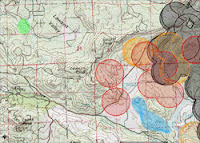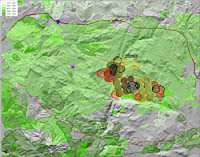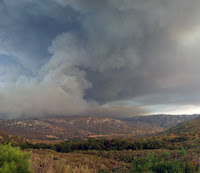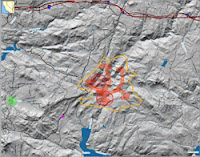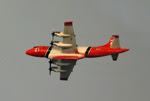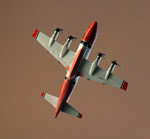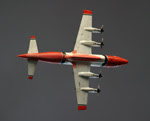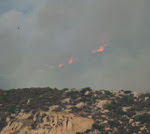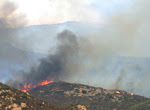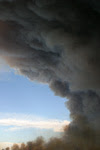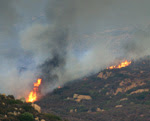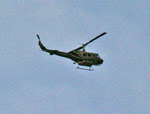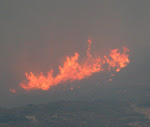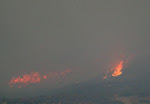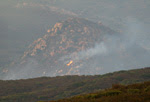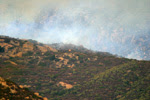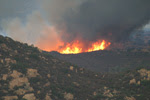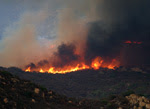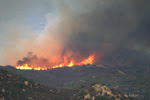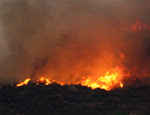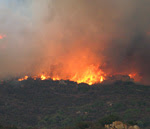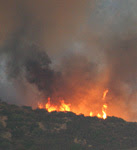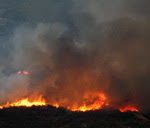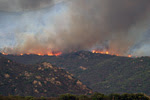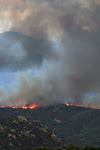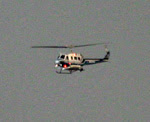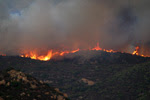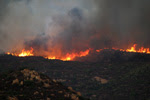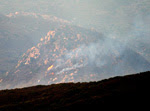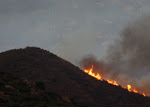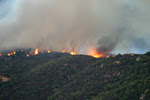The recent Horse Fire was close enough to our home to make us very worried that it might burn us. During the fire, our biggest frustration was not getting accurate information in a timely manner. Several times we found ourselves in a situation where we had enough information to be concerned about an immediate threat, but not enough to know if we should start packing the vehicles for evacuation. This was very frustrating, and a couple of times we ended up taking a chance by doing a reconnoiter so we could either see for ourselves what was happening, or get some accurate information from someone who had seen for themselves. The risk there is that the fire could break out while we were away from home — we would never have done this if it had been windy, but fortunately it was not windy during the Horse Fire.
But this got me to pondering how I could possibly be better prepared the next time we have a fire in the area. It occurred to me that if I could listen to the radio communications of the fire and police, I’d most likely be able to learn a lot, as it happened, and from the horse’s mouth, so to speak. And that made me think of scanners, those radio receivers that “scan” a whole bunch of different frequencies, stopping when they hear someone talking on one. At least, that’s the way scanners worked the last time I had any contact with one, which was something like 20 or 25 years ago.
So I did some research on the web, and first I discovered that much (though not all) of the police and fire communications these days are handled on what are called “trunked” radio systems. These trunked systems work in a very different way than the radios of yesteryear. In particular, it’s no longer true that one particular radio “talks” on one particular frequency on these systems. Instead, each system is capable of talking on many frequencies, and the central system assigns a frequency each time the talk button is pushed. The central system keeps track of who’s talking on what frequency, and broadcasts that information on a special “control channel” frequency, with digital or analog codes. An old-fashioned scanner of the type I knew about would not be usable with these trunked systems, so at first I thought my idea was in trouble.
But with a little more research, I discovered that the scanner manufacturers have kept up with this technology, and scanners for trunked systems are readily available. After some research I settled on one particular model: the Uniden BCD996T. I got the unit a couple of days ago, and over the past couple of evenings and this morning I learned how to set it up for our local fire and police communications. The easiest way to configure this thing, by far, is to use the PC software that comes with it. It’s possible to do it all through the front panel, but very tedious; much less tedious with the software. This morning I entered the last of almost 400 frequencies and channels. Now the unit is sitting on my desktop, scanning away like mad.
Even though I’m a geek, I find myself completely amazed at the capabilities of this scanner. It has some very smart behaviors built in that make the scanning much more effective. For example, once it discovers someone talking on a particular channel and code, it will check that channel and code more frequently, making it more likely that you’ll catch the entire conversation — this works very well. The audio quality isn’t what I expected at all — it’s not the static-filled AM that I remember from 20 years ago; the modern systems are almost all FM and nearly static-free. And the sensitivity to weak signals is just awesome, especially by comparison to the radios of the 1960s, when I last did any serious RF work.
I’m particularly pleased with the ability to hear the firemen in the field, still working on the Horse Fire. I can hear the guys with walkie-talkies, way out in the boonies, as they work away at hot spots. This morning it is drizzling here, and I heard one team decide not to go into a steep-sided gorge, because they were afraid they couldn’t get out if the roads were wet. In the course of this conversation, they rattled off their GPS coordinates, so I was able to locate them precisely on a map. This is exactly what I hope to be able to do during a fire next time…
Next weekend I’ll be putting up a better antenna for my scanner. Right now I’m operating on just the little whip that came with it. A high-gain antenna, located outside and away from the electronic noise in the house, should work much better yet — especially for the weaker signals from walkie-talkies down in canyons, etc.
Debbie and I, as we listened this morning to the firefighters on the radio, were kicking ourselves for not having done this long ago. I’d encourage anybody living in the chaparral to get one of these scanners. And if you happen to live in San Diego, and you decide to get the same model that I did, I’d be more than happy to share the programming files with you (what Uniden calls “System” files) — just email me, and I’ll send them along…












